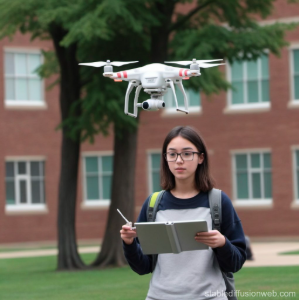In today’s classrooms, technology is doing more than just supporting learning—it’s transforming it. One of the most exciting innovations making its way into educational settings is the use of drones. Far from being limited to recreational or commercial use, drones are now becoming powerful tools for teaching and engagement across a wide range of subjects. Schools are beginning to embrace drone technology as a hands-on way to spark curiosity, encourage problem-solving, and prepare students for future careers.
Bringing Lessons to Life
Drones help teachers bring abstract concepts to life. In science and geography classes, for example, students can fly drones to study ecosystems, map terrain, or measure environmental changes. These experiences provide real-time data collection, which can lead to deeper analysis and more meaningful learning.
In STEM (Science, Technology, Engineering, and Mathematics) education, drones support lessons on coding, engineering, and physics. Students may program drone flight paths using basic coding languages, helping them understand key principles like logic, sequencing, and spatial awareness.
Creative and Visual Learning
Art and media teachers are also using drones to enhance creativity. Aerial photography and video projects allow students to explore storytelling, cinematography, and digital editing skills from a new perspective. This exposure not only builds creative skills but also introduces students to potential careers in media and visual technology.
Drones and Career Readiness
One of the main benefits of introducing drones into the classroom is career preparation. As drone technology is increasingly used in industries such as agriculture, logistics, construction, and environmental monitoring, students who gain early experience with these tools may be better equipped for the workforce. By learning how to operate drones safely and responsibly, they also gain a foundation in ethics, privacy awareness, and technical skills that are valuable in many professions.
Safety and Responsibility
Schools that use drones for learning place a strong emphasis on safety and responsibility. Students are taught to follow guidelines for safe drone operation, which includes respecting airspace rules and being mindful of people and property. This not only supports responsible tech use but also aligns with broader digital citizenship goals.
Conclusion
The use of drones in schools is more than just a trend—it’s a step toward more interactive and career-relevant education. By incorporating drone technology into the curriculum, schools are helping students connect theory to practice, explore new interests, and build skills that extend far beyond the classroom.














